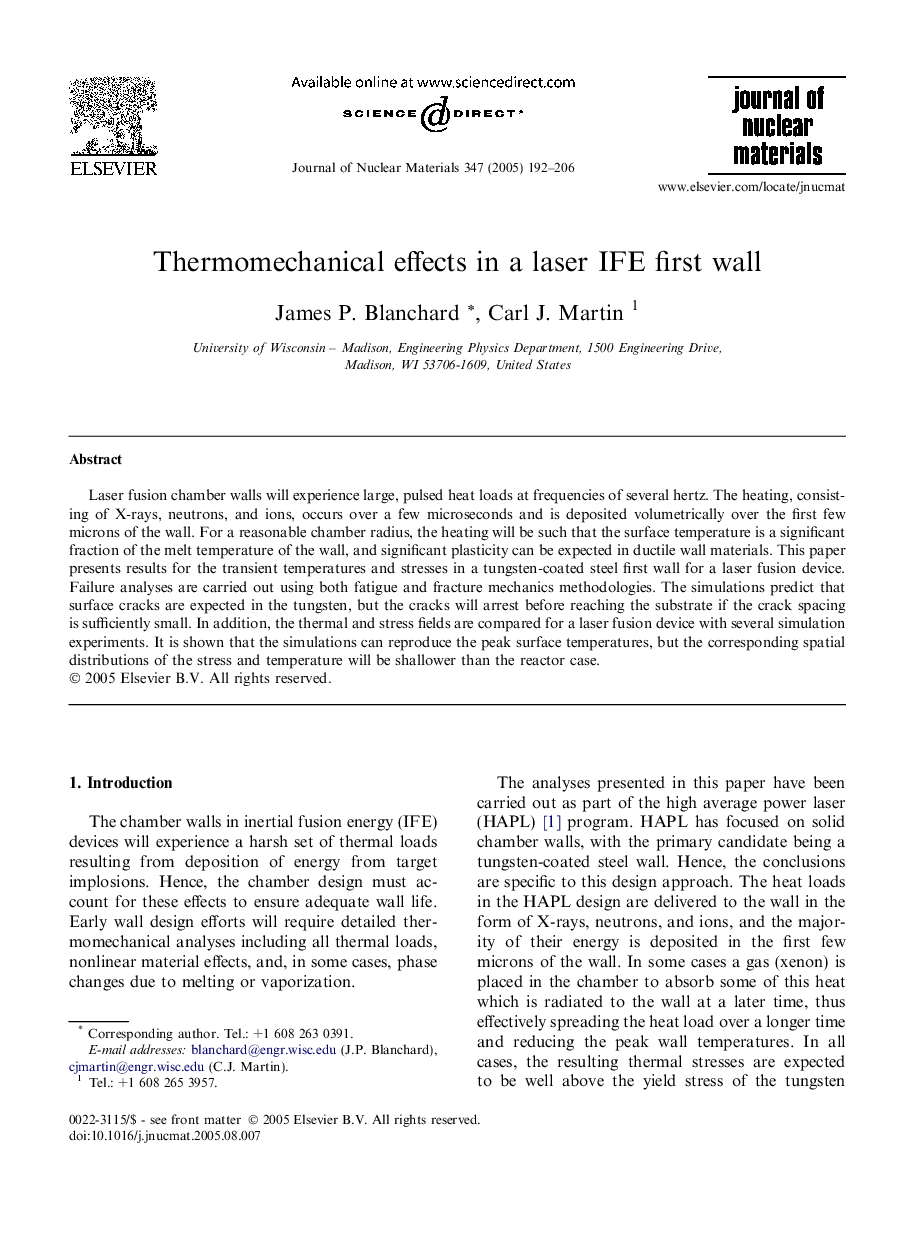| Article ID | Journal | Published Year | Pages | File Type |
|---|---|---|---|---|
| 10645171 | Journal of Nuclear Materials | 2005 | 15 Pages |
Abstract
Laser fusion chamber walls will experience large, pulsed heat loads at frequencies of several hertz. The heating, consisting of X-rays, neutrons, and ions, occurs over a few microseconds and is deposited volumetrically over the first few microns of the wall. For a reasonable chamber radius, the heating will be such that the surface temperature is a significant fraction of the melt temperature of the wall, and significant plasticity can be expected in ductile wall materials. This paper presents results for the transient temperatures and stresses in a tungsten-coated steel first wall for a laser fusion device. Failure analyses are carried out using both fatigue and fracture mechanics methodologies. The simulations predict that surface cracks are expected in the tungsten, but the cracks will arrest before reaching the substrate if the crack spacing is sufficiently small. In addition, the thermal and stress fields are compared for a laser fusion device with several simulation experiments. It is shown that the simulations can reproduce the peak surface temperatures, but the corresponding spatial distributions of the stress and temperature will be shallower than the reactor case.
Related Topics
Physical Sciences and Engineering
Energy
Nuclear Energy and Engineering
Authors
James P. Blanchard, Carl J. Martin,
